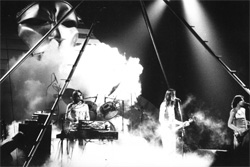
When I started writing, knowing that I could, it gave me a voice, my voice.

Actually, Derek Nakamoto is the one who encouraged me and helped me. Rafu : Was there a turning point for you? The “Spirit of the Season” concert at the Aratani Theatre was a beloved holiday tradition. June thought, “Maybe they’ll do something with me on koto.” It was her idea. My brother John and I started an art school band at Cal State Long Beach. But my best memory, especially at the beginning, is the warm reception from the community itself to be open and supportive of what we were doing because no one else was doing it.ĭan: The entire notion of what Hiroshima became was from June. Koto is a revered instrument…so a lot of people were offended or called me vulgar for (playing non-classical music). They didn’t know what to do with (a koto). Like in high school, I couldn’t join the band. I really didn’t have Western music education. June : I only had classical koto training. Rafu : What do you remember most about those early days? We asked Dan and June to take us back to the beginning. Back row, from left: Richard Matthews, Danny Yamamoto, Peter Hata, Dane Matsumura. Front row, from left: Teri Kusumoto, Johnny Mori, Jess Acuna, Dan Kuramoto, June Kuramoto. As Hiroshima grew in popularity, their music became the Asian American movement’s de facto soundtrack. Around the same time, a political movement was gaining traction among young Sansei, who were bringing issues like Vietnam, civil rights, and ethnic studies to public consciousness. In the late 1960s, Hiroshima introduced a new, uniquely Japanese American vibe featuring June’s jazz-infused koto, representing a fresh new musical form. For Hiroshima devotees, this may be the band’s best and most uplifting collection yet. The revelation that Hiroshima is planning to step back comes as the band released its latest album, “2020.” With songs bearing titles like “Someday Soon,” “Brighter Days,” and “Álways Tomorrow,” the post-pandemic feel-good message is clear. (Photo by Ken Fong)Īfter 40-plus years of concerts, touring, and recording, June Kuramoto and Dan Kuramoto of the smooth jazz group Hiroshima recently announced that their Domo Tour in 2022 will likely be the band’s last. Dan and June reflected on saying “sayonara” to the road, the next phase in their lives, and what it means for the iconic Sansei band. Hiroshima has toured the world for 40 years. If you’re unwell, it is recommended that you stay at home, and we look forward to welcoming you at Salamanca Arts Centre another time.From left: June Kuramoto, Kimo Cornwell, Land Richards, Dean Cortez and Dan Kuramoto. Masks will be available upon entering the venue for those patrons who would like one. Whilst the wearing of masks is not mandatory it is recommended in certain situations by Tasmanian Public Health. The participating groups in Utopia Now Art Installation are: Campania District School | Goodwood Community Centre | The Circus Studio | TAFE Students Against Racism | City of Hobart Youth Art and Recreation Centre | Pakana Studio/Kickstart venue for Takani’s Workshops | LGTBQIA+ community | Cygnet Community

The presentation will also include live performances and interactive elements. The culmination of this explorative creative process will be a large-scale installation. Utopia Now! is a community art project where artists collaborated with young people from diverse backgrounds and present their vision of a sustainable future that allows us all to flourish and live in harmony. This event is part of Winter Light 2022 and is presented by Salamanca Arts Centre


 0 kommentar(er)
0 kommentar(er)
